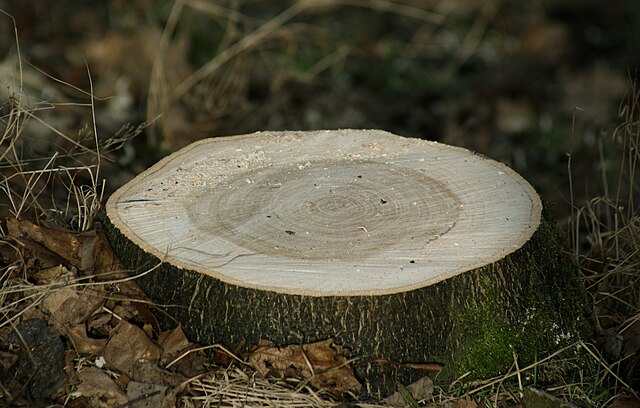After a tree has been cut and felled, the stump or tree stump is usually a small remaining portion of the trunk with the roots still in the ground. Stumps may show the age-defining rings of a tree. The study of these rings is known as dendrochronology.
Tree stump, about 37 years after felling
Stump sculpture by German artist Eberhard Bosslet
A freshly cut tree stump, 2 hours after cutting
A saprobiontic young spruce on a stump
Coppicing is the traditional method in woodland management of cutting down a tree to a stump, which in many species encourages new shoots to grow from the stump or roots, thus ultimately regrowing the tree. A forest or grove that has been subject to coppicing is called a copse or coppice, in which young tree stems are repeatedly cut down to near ground level. The resulting living stumps are called stools. New growth emerges, and after a number of years, the coppiced trees are harvested, and the cycle begins anew. Pollarding is a similar process carried out at a higher level on the tree in order to prevent grazing animals from eating new shoots. Daisugi, is a similar Japanese technique.
Shortly after coppicing.
One year's regrowth.
Recently felled chestnut coppice near Petworth in West Sussex
Old hornbeam coppice stools left uncut for at least 100 years. Coldfall Wood, London








